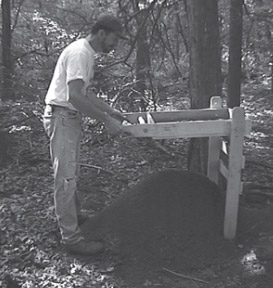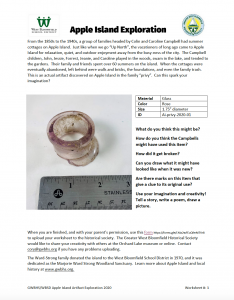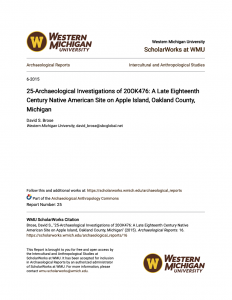
In the 1930s, an Apple Island resident was plowing his small cornfield in the middle of the island and struck what turned out to be a French-made, spun pewter bowl. Filled with shell beads, or wampum, it dates from the late 1700s or early 1800s, and was probably a gift from the French to the Native Americans. The bowl is now in the Cranbrook Collection.
Several one-meter-square test pits dug on the west side of the island in 1997 yielded pottery and stone tools. At present there is no evidence that pottery production ever occurred on the island, nor is there a local source of flint or other stone suited to the manufacture of tools. These items were most likely brought to the island.
One sign of early European influence on this area’s native population is the appearance of silver trade items, several of which were recovered during archaeological excavations on the island in June 2000. Jointly organized by the Greater West Bloomfield Historical Society, St. Mary’s College and the West Bloomfield School District, the field study gave local high school students an opportunity to earn college credit while unearthing and preserving clues to Apple Island’s past.
For more information about the history of Apple Island, visit Apple Island History.
Apple Island Artifact Exploration Worksheets

Reports on Apple Island Archaeological Projects

Dr. David Brose:
(Formal Report) 25-Archaeological Investigations of 20OK476: A Late Eighteenth Century Native American Site on Apple Island, Oakland County, Michigan by David S. Brose, Western Michigan University
(13-page summary) A Late 18th Century American Indian Campsite on Apple Island, Oakland County, Michigan by Dr. David S. Brose
Mark Hoock:
Investigating Leisure Furthering the Archaeological Examination of Apple Island by Mark Hoock (M.A.)